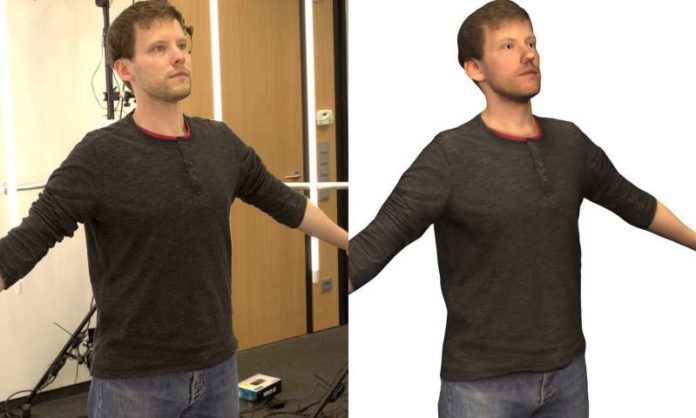A new system developed by Bielefeld University’s Cluster of Excellence Cognitive Interaction Technology (CITEC) is going to elevate your workout with a novel idea: avatar creation. We’ve seen how avatars motivate us to reach our workout goals. This new system of cameras utilizes basic technology as a proof of concept.
Could consumer avatar creation become big business in the near future?
How it Works
The system utilizes a setup of around 40 DSLR cameras, which capture photographs of the subject from all sides. This acts as the reference to generate the 3D model of someone, but the kicker is what that model can do.
With several million points of articulation across the body, quite a bit of motion is allowable. The system can detect how fingers are moving, and allow individual joints. Coupled with photorealism and the potential for better animation goes through the roof. It also takes only 10 minutes to complete the process of digitization.
The photographs are “stitched” or layered onto a generic three-dimensional model. At this stage, there’s not much choice in terms of body types. In the near future, we might see some flexibility and a bit more realism.
Fitness Benefits
There are some huge fitness and health benefits here that you might not have considered. First and foremost is the motivational factor. Seeing our ideal self-working out right next to us, or our own avatar as we workout reflected in a mirror in the virtual world can help us “see” results and keep going. Future systems may allow our avatars to improve incrementally, so we can see virtual changes reflected in the system that might push us toward separate goals related to fitness. For example, a fantasy game where you begin wearing basic leather armor but graduate to the metal stuff as you become progressively stronger.
The system also utilizes several points of articulation for full range of motion. The job of a trainer, in addition to improving your routine and providing nutritional guidance, is making sure your exercises aren’t causing your body stress. A gym equipped with this kind of system would be able to create a digital coach to correct your form. It could prevent injury and decrease overexertion, even in the home like a remote workout buddy.
We’ve already seen how VR can help us improve reaction times, and coaches could take that technology remote. Future players may actually live the game in some respects. Donning headsets outside the field will run through training scenarios with their digital teammates in a multiplayer style scenario. Sounds a bit like STRIVR. Imagine the data generated by a practice session like that! Stat enthusiasts would love to root through that to see how to improve an individual player. Sports recruiting, fantasy football, even color commentary would change entirely if we had granular information on a player’s health or athleticism.
Final Thoughts
A virtual avatar can be a powerful tool for fitness and sports, with applications at the consumer level as well. Who wouldn’t want to see their avatar in a major game like Fallout or World of Warcraft? Plus, the idea that your avatar in the game can change ties into a major theme of VR fitness: your body becomes the controller and your progress is dictated by your physical limits. Avatar creation would help more of us achieve those incremental goals that become the challenge of a fit lifestyle. Learning how to progress when there has been no progress is one of the biggest humps to overcome in physical fitness.


